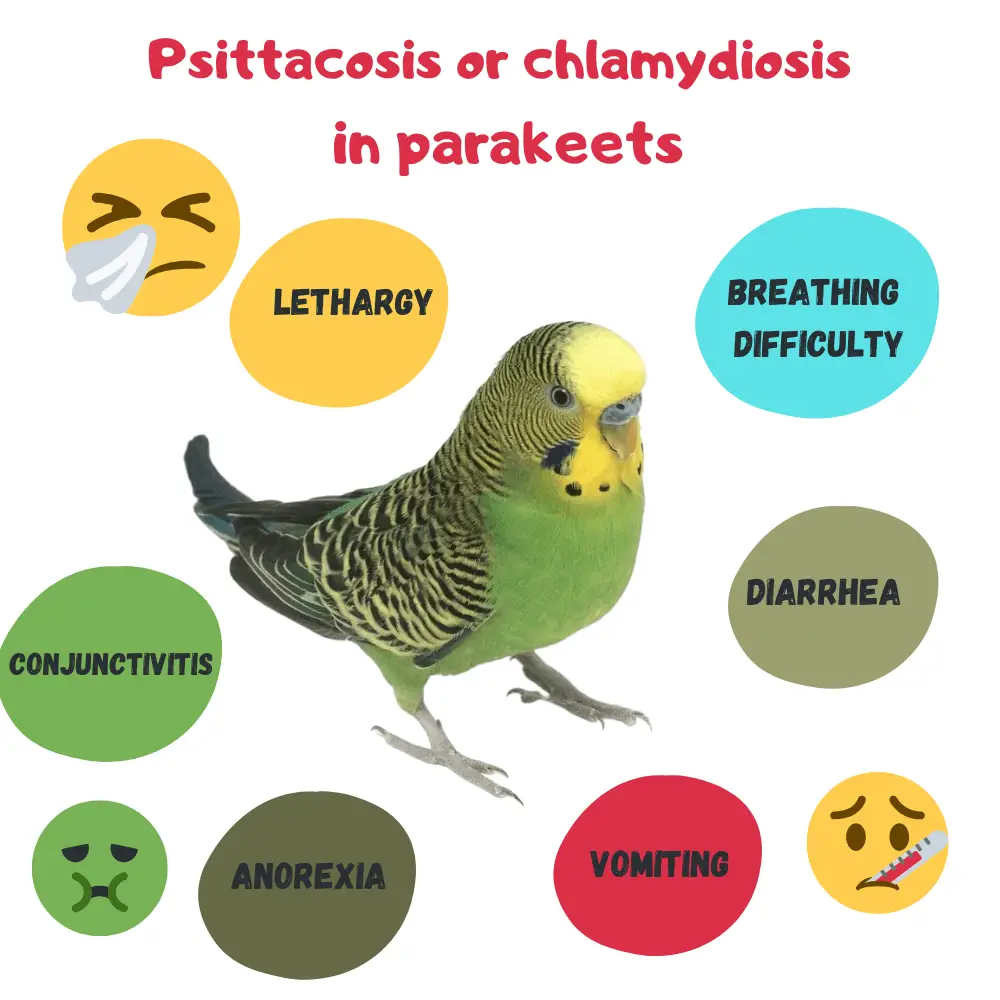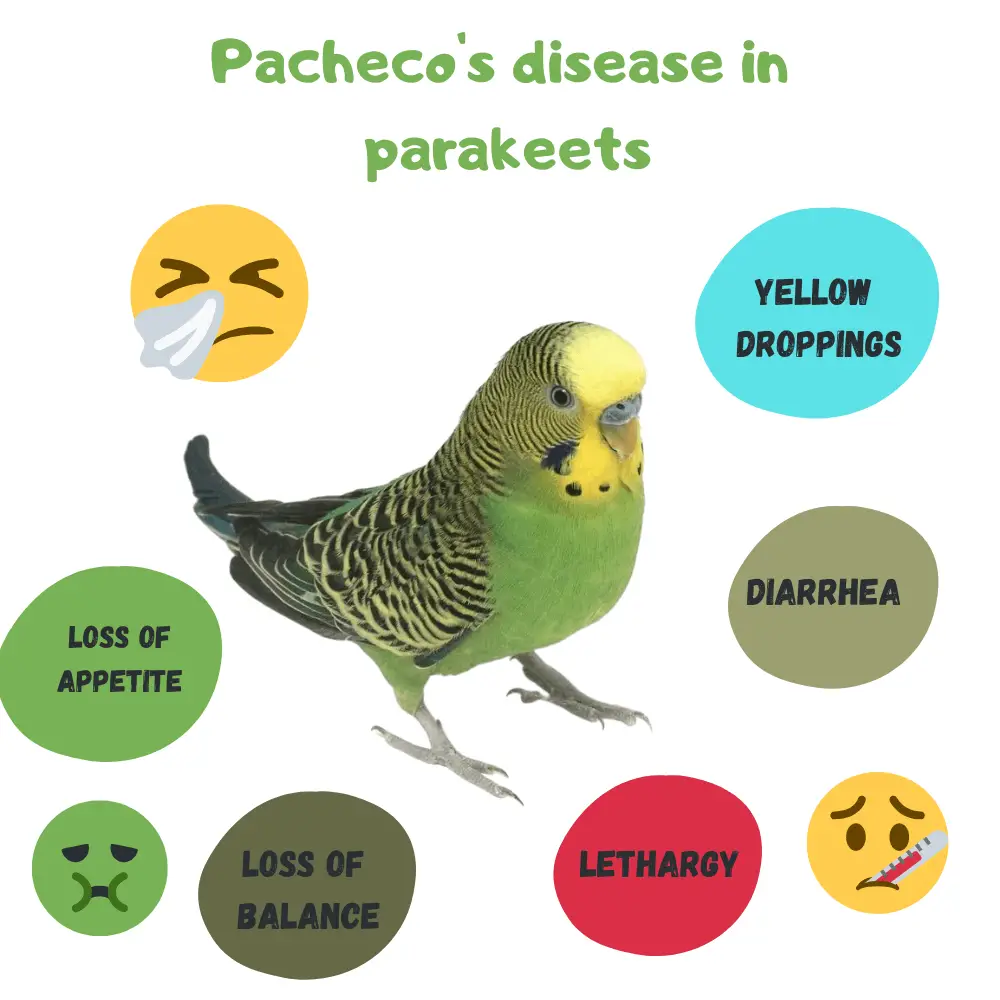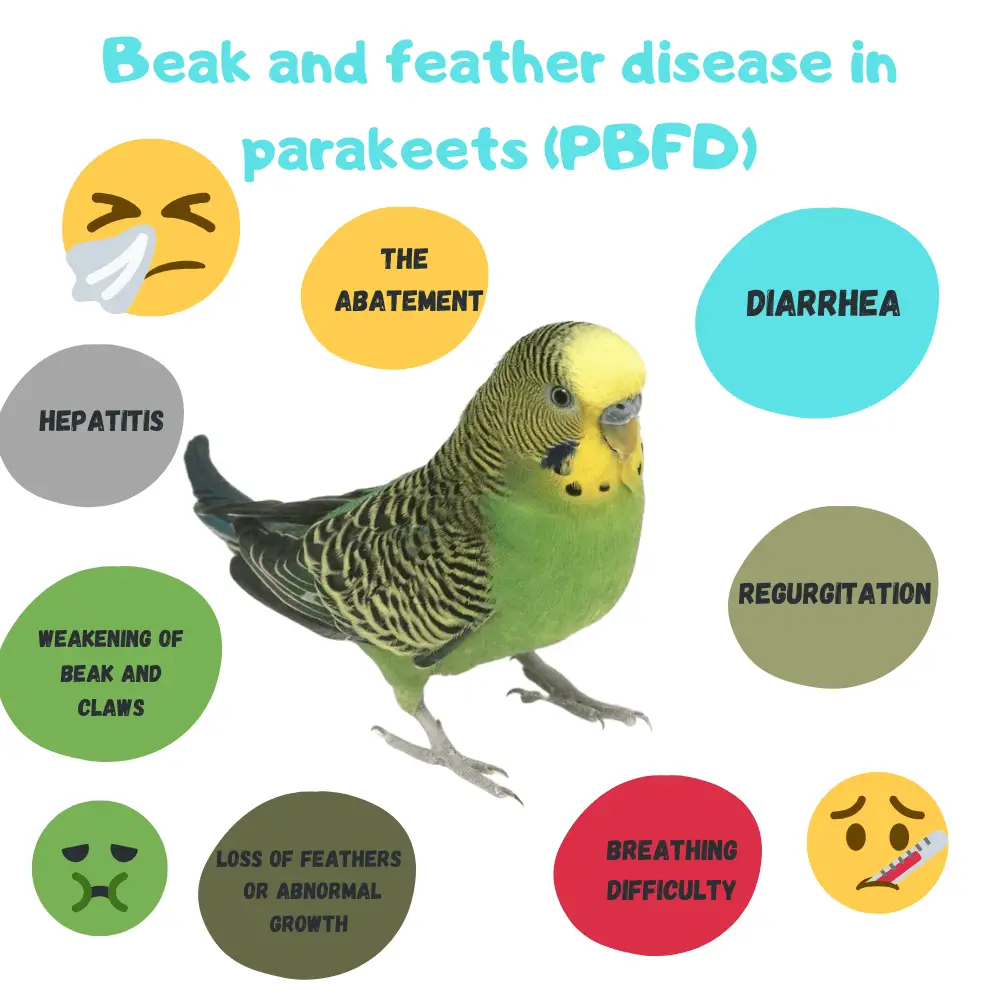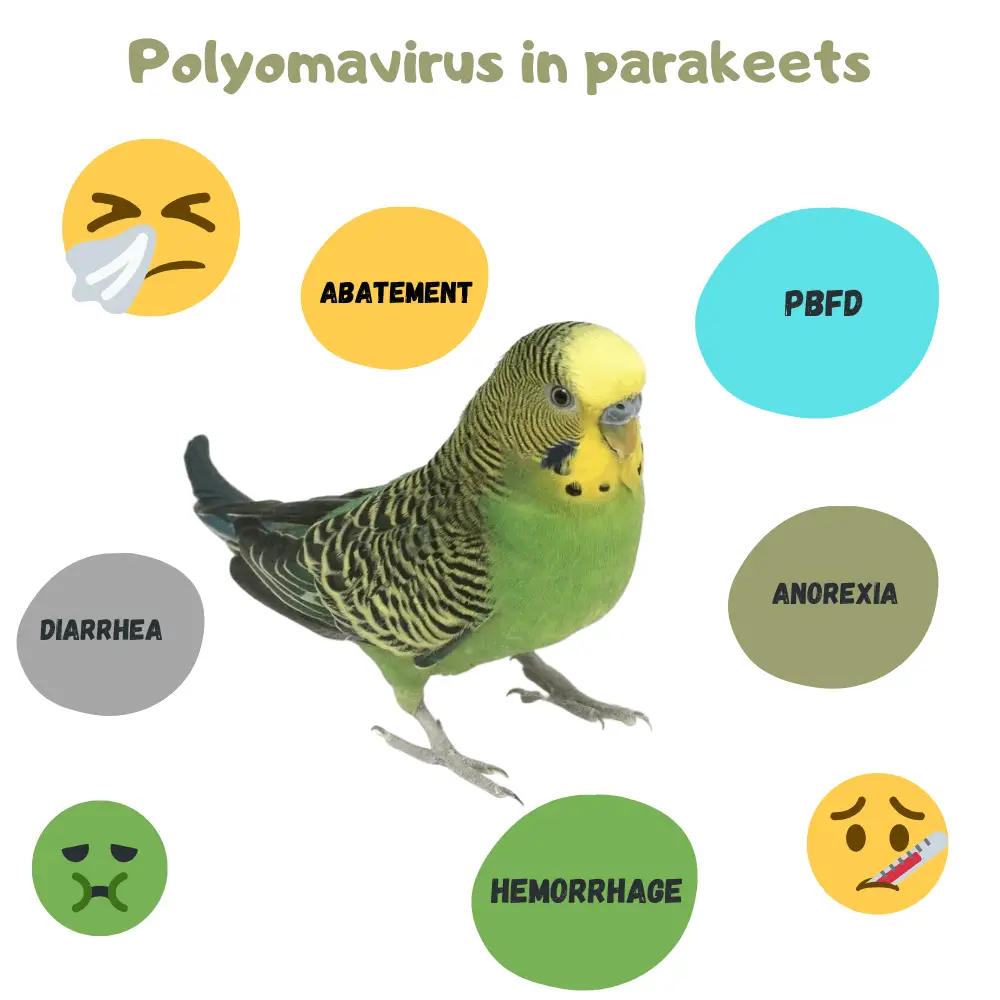Parakeet disease: Knowing and knowing how to detect the main diseases of parakeets is essential to be able to act quickly at the first signs. Very often, when we notice the signs of a disease, the latter is already at an advanced stage and the life of the parakeet is already in danger. But above all, a sick parakeet can quickly contaminate its congeners and the whole community is in danger.
What are the main diseases of parakeets and parrots? How to recognize a sick parakeet? What are the symptoms of a sick parakeet? To help you take care of the health of your parakeets, here is a guide to common parakeet diseases.
Psittacosis or chlamydiosis in parakeets

Psittacosis, which is also called chlamydiosis, is a dreadful disease that mainly affects parakeets, parrots, and pigeons and which can be transmitted to humans but also to our friends and cats. At the origin of psittacosis is a bacterium called Chlamydiophila psittaci whose diagnosis is difficult due to various symptoms. It is by a blood test supplemented by a sample of feathers and a smear (PCR test) that the disease can be detected, of which certain birds are healthy carriers.
Symptoms of chlamydiosis in parakeets :
- Breathing difficulty
- Diarrhea
- Vomiting
- Anorexia
- Conjunctivitis
- Lethargy
In humans, psittacosis appears after an incubation period of five to fourteen days in the form of the strong flu which only antibiotics have an effect.
To treat a parakeet suffering from psittacosis, it is administered a treatment based on tetracycline for a month to 45 days. When the disease is diagnosed in a bird, it is essential to have the congeners tested and to disinfect the entire cage and accessories.
Pacheco’s disease in parakeets

Pacheco’s disease is caused by a herpes virus (PsHv), it can sometimes cause sudden death in an affected bird. Highly contagious, the virus is transmitted through nasal and fecal secretions but also when a bird comes into contact with a contaminated environment. For this reason, when the virus is detected in a bird, it must be quickly isolated and the entire cage and accessories must be disinfected with alcohol or bleach.
Symptoms of Pacheco’s disease :
- Diarrhea
- Yellow droppings
- Lethargy
- Loss of appetite
- Loss of balance
Diagnosis of Pacheco’s disease is made by a blood test and/or a smear from the parrot’s beak (PCR). Unfortunately, there is no treatment for Pacheco’s disease, other than the administration of acyclovir to limit contamination to other birds. Death is usually inevitable.
Beak and feather disease in parakeets (PBFD)

PBFD, more commonly known as beak and feather disease, is a virus called Circovirus affecting psittacines and which is also dreadful. This disease alters the plumage and the beak of the bird. The feathers grow abnormally or not at all and one can notice the presence of infections or hemorrhage. Its beak is weakening as well as its claws, we also observe an abnormal growth. Overall, the disease causes a drop in the immune system and makes it vulnerable to many infections.
The symptoms of beak and feather disease are:
- The abatement
- Diarrhea
- Regurgitation
- Breathing difficulty
- Loss of feathers or abnormal growth
- Weakening of beak and claws
- Hepatitis
Diagnosis of beak and feather disease is made quickly at the first abnormal signs on the bird’s plumage, but screening can be done by DNA test (PCR). No treatment exists against PBFD, it is possible to act on the symptoms but death remains inevitable.
Polyomavirus in parakeets

The polyomavirus is a disease that is observed mainly in young parakeets and which is also called weaning disease. It causes the sudden death of a bird before it is weaned and is due to papovavirus infection. However, all psittacines of any age can be infected.
The symptoms of polyomavirus are:
- Abatement
- Anorexia
- Diarrhea
- PBFD
- Hemorrhage
Acariosis or beak mange in parakeets

The acariose manifests itself by a parasitic infection caused by mites digging galleries in the beak, the cere, the legs or the cloaca of the parakeet. Without treatment for beak mange, the parakeet can develop serious infections that can cause its beak and affected areas to drop.
Symptoms of mange in parakeets are:
- Itching and scratching
- Scabs on the beak, cere, legs or vent
To treat your parakeet suffering from mange, the treatment consists of administering an ivermectin-based product in the external application according to a specific dosage prescribed by the veterinarian. It is also possible to use an avermectin-based product such as Stronghold for kittens at the rate of a single drop on the neck of the parakeet. The advice a veterinarian is strongly recommended to treat mange in parakeets.

